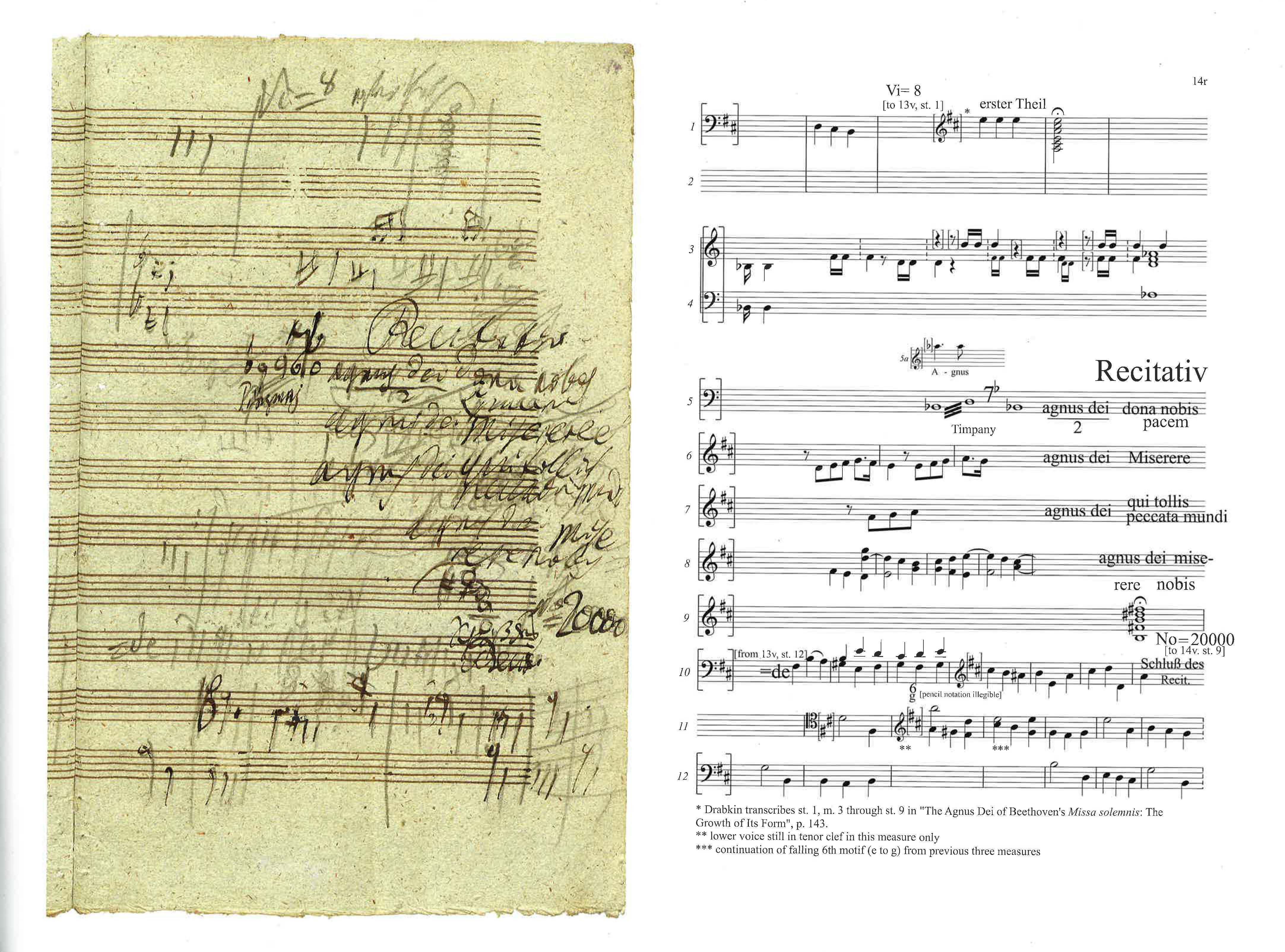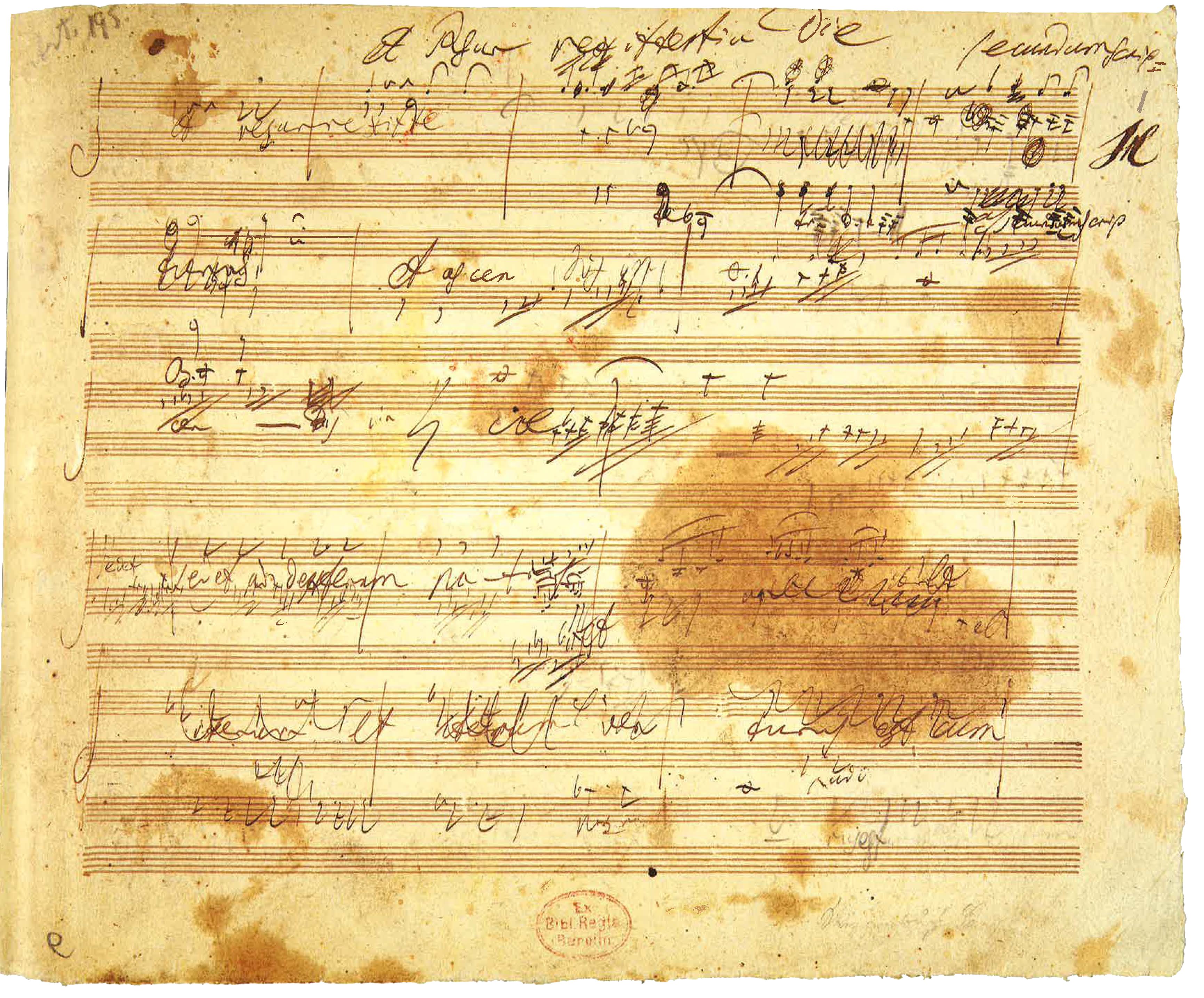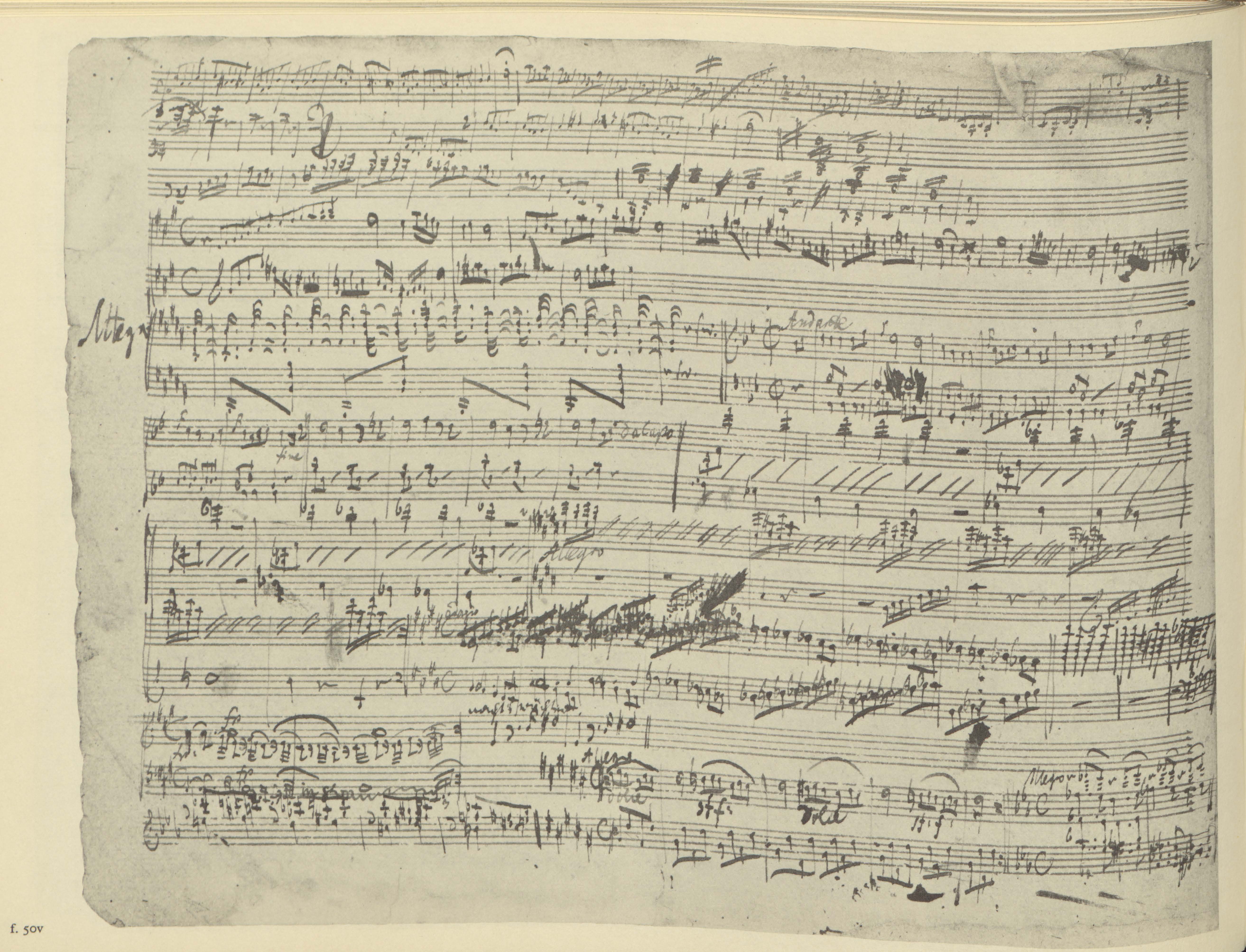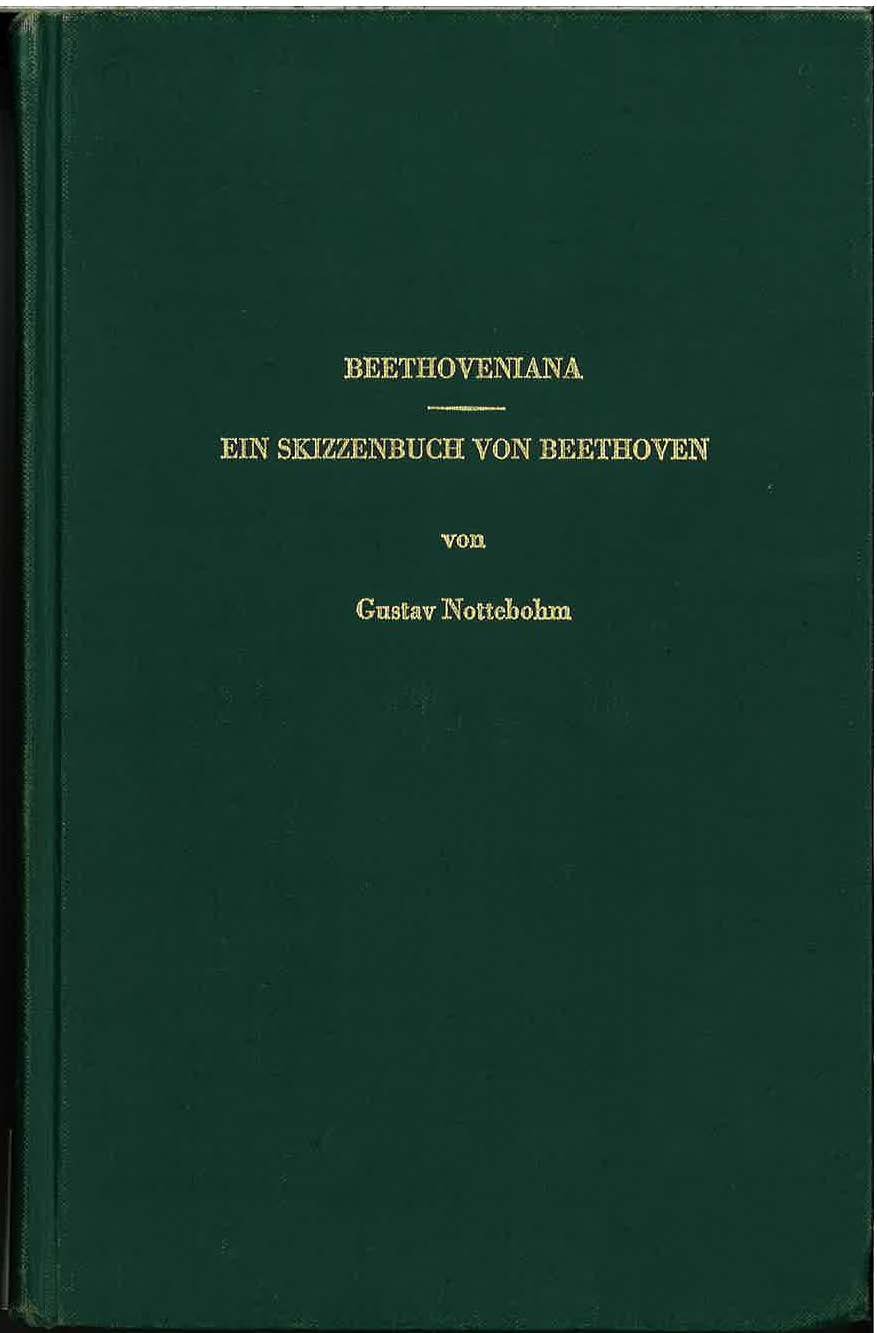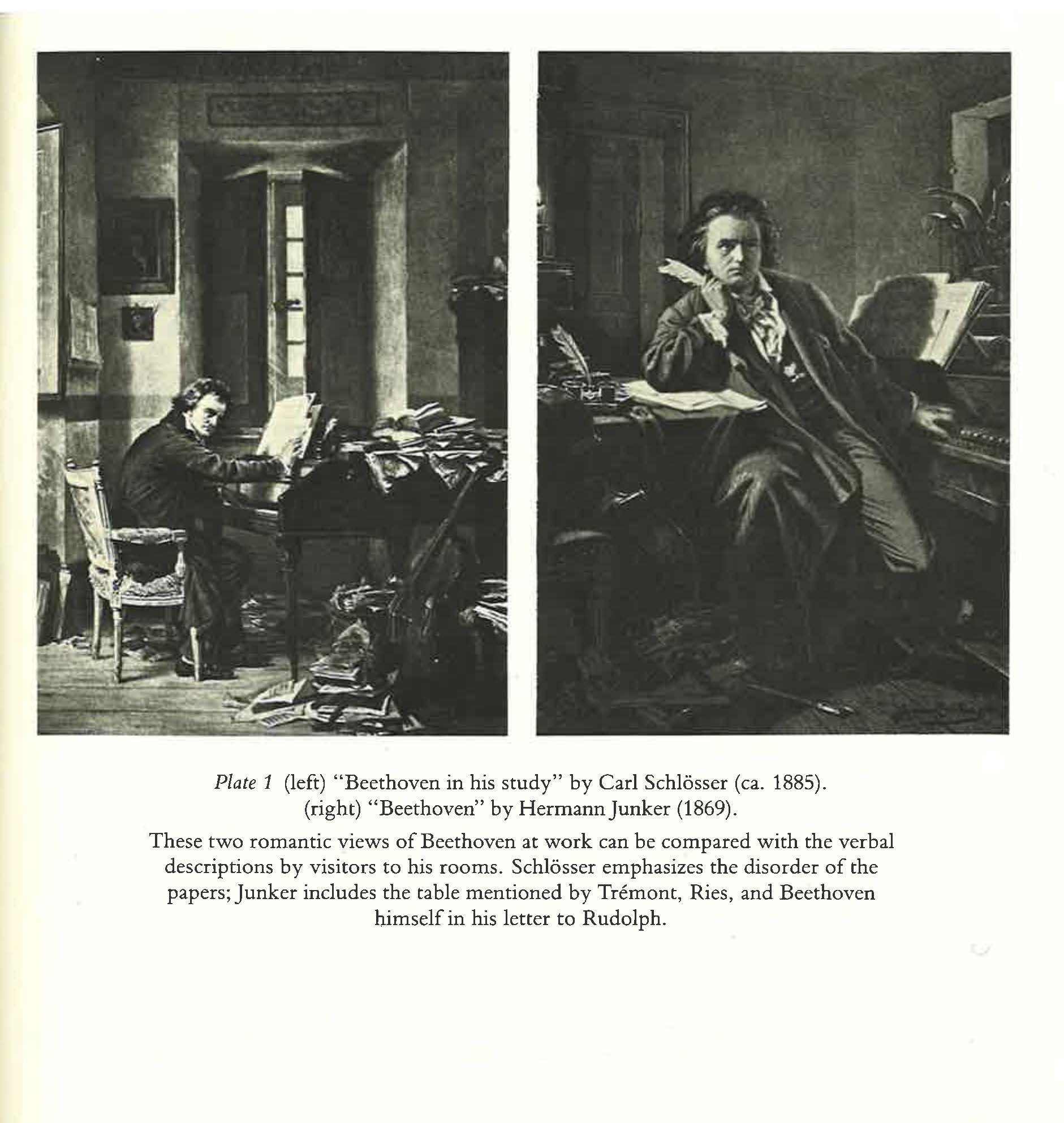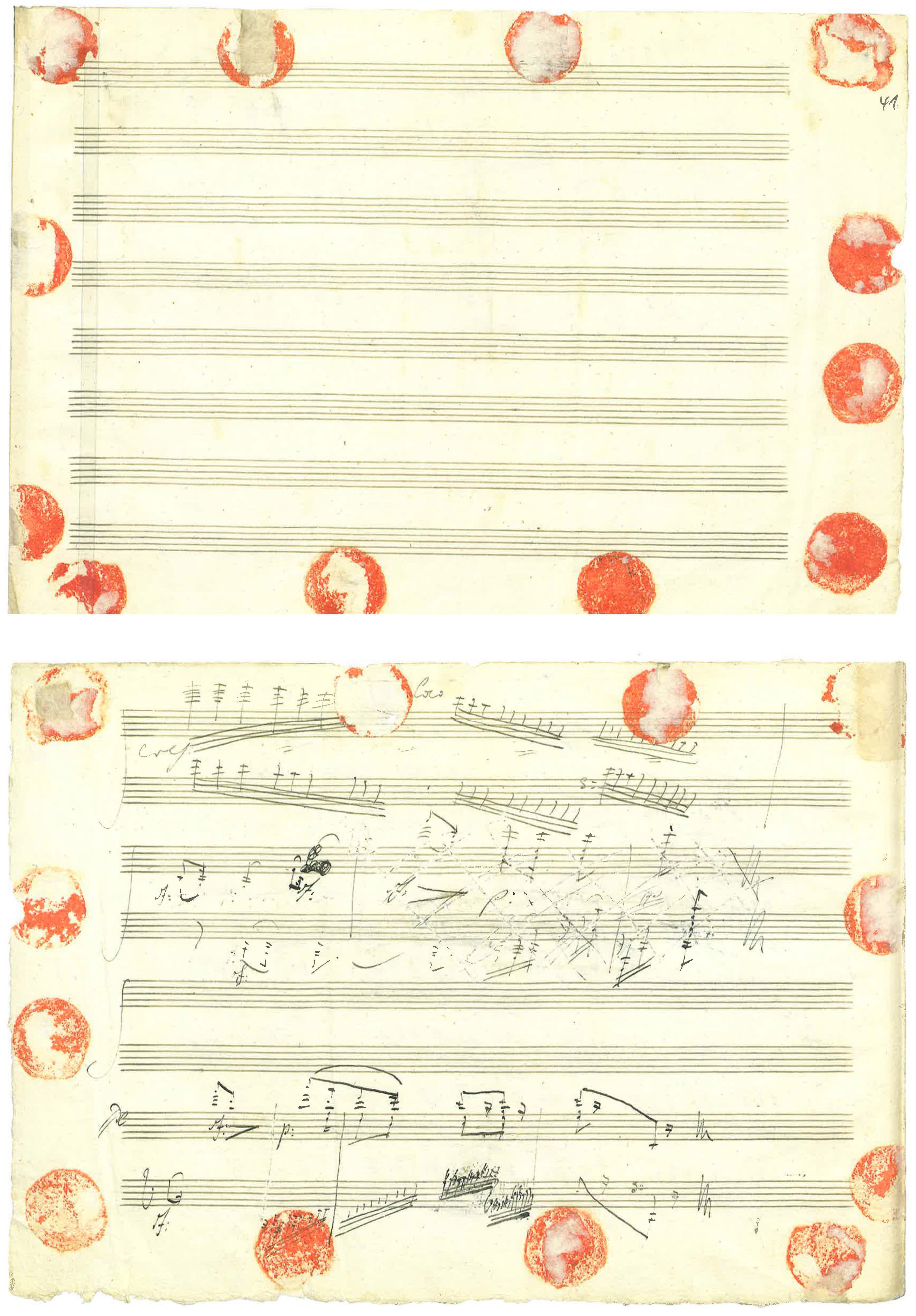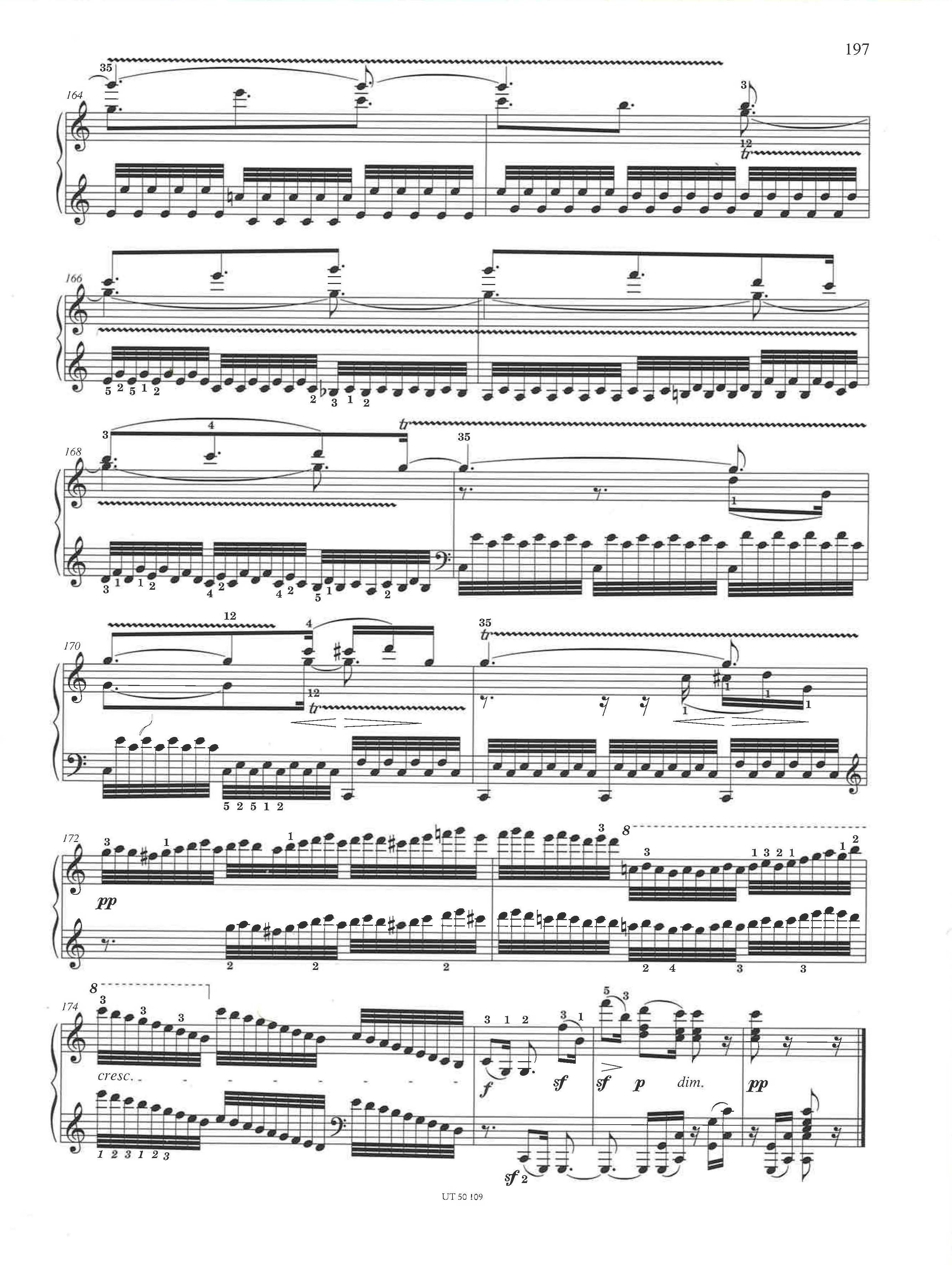Case 1
The books in which Beethoven carried out his sketching can be identified as falling into one of three categories: collections of loose leaves, large sketchbooks, and pocket books. The first of these, loose leaves, were used by Beethoven early in his life (from around 1786 to 1799) to draft compositions, as well as to write out compositional exercises, often for the keyboard. These loose leaves were later collected, sorted, and sewn together into book format by the composer himself. One such loose leaf that is shown here (a) is from the Kafka Sketch Miscellany, an early collection of loose leaves, and features more than a dozen sketches which have no apparent relation to each other. The relative density of ink, as well as clarity of the notation, suggests two aspects of Beethoven’s early career: first, that the composer was faced with the practical need to be as efficient as possible with his use of page space, as paper was extremely expensive and, second, that many of the musical ideas were already well-formed prior to putting them down on the page. As the composer’s compositions developed in terms of complexity throughout his career, Beethoven’s sketching practices adjusted to facilitate a more involved engagement with the notated musical material. Beginning 1798, full sketchbooks, as opposed to single sheets, became the preferred format to house his sketches. The example shown here (b) from the first page of the Artaria 195 sketchbook for the Credo from Missa solemnis highlights the shift in style to a more spacious, elaborate, and even chaotic sketching practice. Beethoven used sketchbooks for a number of practical purposes, including detailed working-out of small musical ideas, as well as continuity drafts that might extend over large portions of a sketchbook. (Indeed, the Credo sketch here is the beginning of a continuity draft, though a draft which differs quite drastically from what would become the final version.) The third category, pocket sketchbooks, seems to have been taken up by Beethoven later in his life as a way to gain easy access to notation in places other than his home. In the page shown here (c) from the Grasnick 5 pocket sketchbook, one finds fragmentary ideas for the musical material of the Agnus Dei from the Missa, as well as a preliminary formal plan for the movement.
Sources:
Cooper, Barry. Beethoven and the Creative Process. Oxford: Clarendon Press, 1990.
Lockwood, Lewis. Beethoven: Studies in the Creative Process. Cambridge: Harvard University Press, 1992.
With the publishing of his well-known sketch transcriptions in the 1870s-80s, Gustav Nottebohm became a pioneering figure for the field of Beethoven sketch studies. While the focus of more recent sketch studies has shifted toward interpreting the differences between sketches and final versions in order to better understand the process of musical conception, Nottebohm’s work is much more preoccupied with the decryption of Beethoven’s hand. This work of making the notes of the sketches legible was no small task and served to facilitate much of the research carried out by future generations of Beethoven scholars. Featured on the left is the first volume from Nottebohm’s two-part Beethovenia which contains commentary, as well as transcriptions for two sketchbooks from 1801 and 1803.
As can be seen in the autograph score for the Kyrie from Missa solemnis also featured in this exhibit, Beethoven frequently continued to make changes in the music throughout the process of notating the autograph score. Even up until the final lines in the autograph score for Op. 111 (shown above), the composer seems yet to have settled on what form the ending of the movement should take. First, Beethoven writes what is very similar to the final version, only to cross it out and replace it with an alternative ending. Still dissatisfied, the composer elects to attach the sheets to one another with red wax, effectively removing these two pages from the score, before starting over on the following page of the autograph (not shown).
